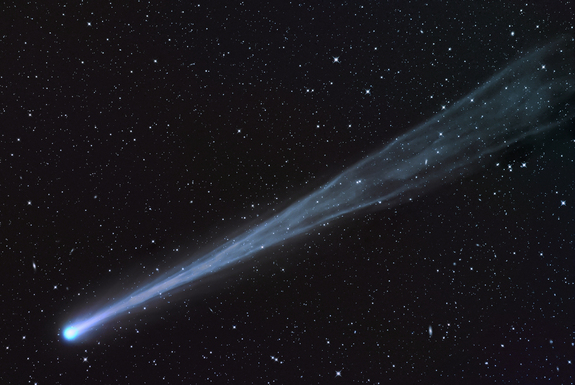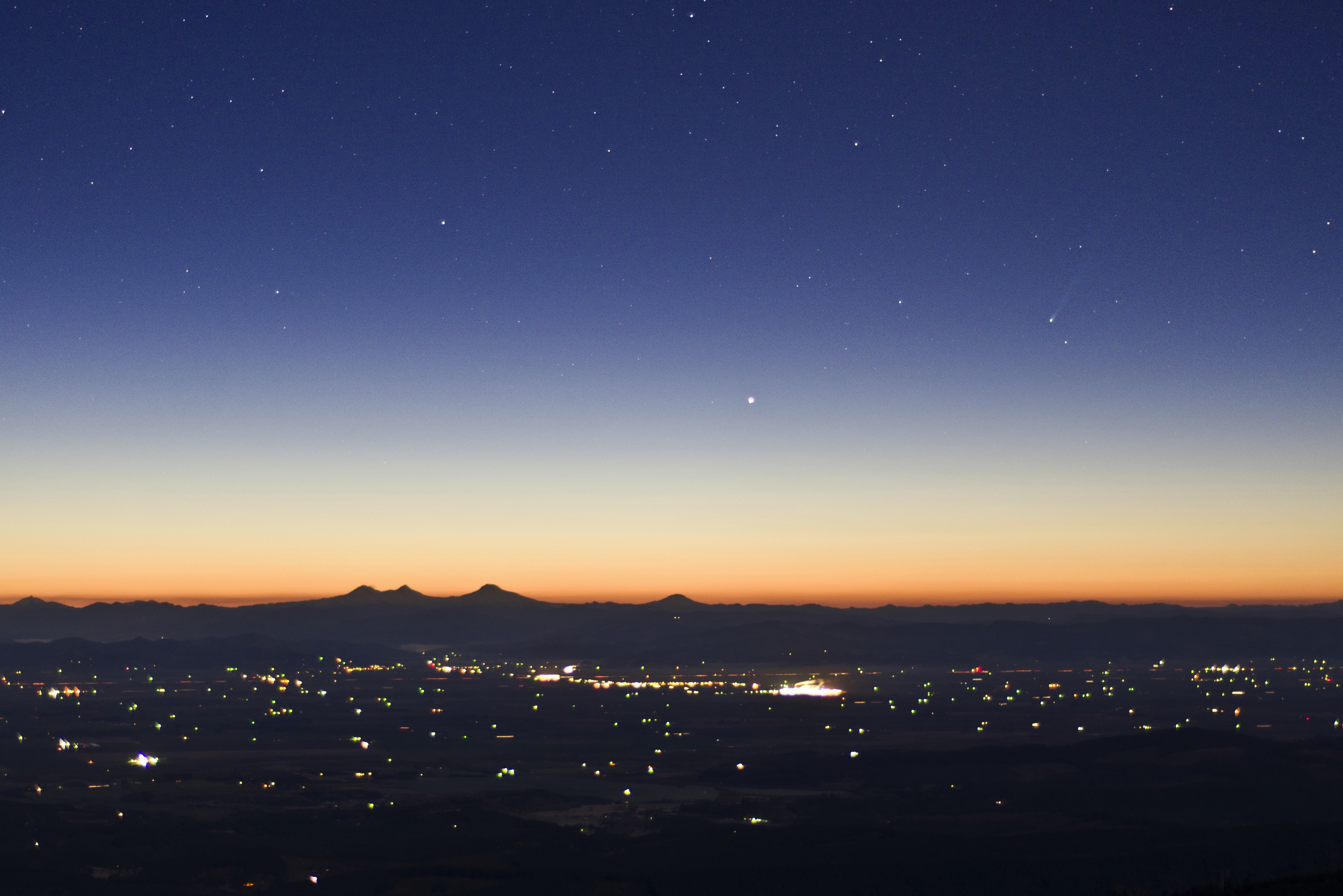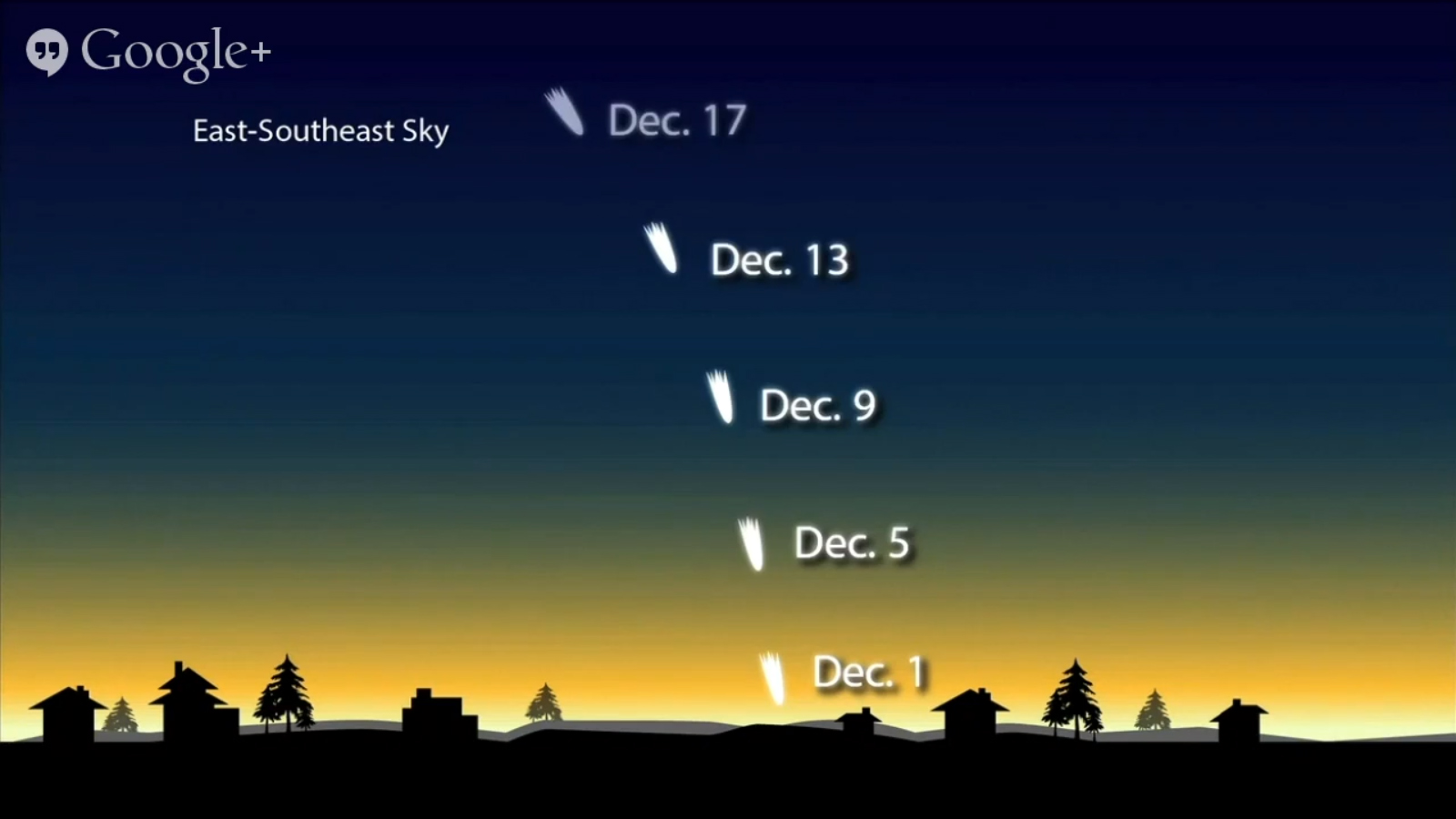Comet ISON Gets Roasted by Sun and Vanishes, But Did It Survive?

Call it a cosmic holiday miracle. The much-anticipated Comet ISON appeared to disintegrate during its Thanksgiving Day slingshot around the sun Thursday, but something — it seems — may have survived.
The sungrazing Comet ISON vanished from the view of NASA's Solar Dynamics Observatory (SDO) during an extremely close encounter with the sun on Thursday (Nov. 28), leading scientists to suspect the worst.
"We didn't see Comet ISON in SDO," said Dean Pesnell, project scientist for SDO. "So we think it must have broken up and evaporated before it reached perihelion." [See the latest photos of Comet ISON]
But late Thursday night, images from another sun-watching spacecraft, the Solar and Heliospheric Observatory (SOHO) run by NASA and the European Space Agency, picked up a blip of something rounding the sun in a camera called LASCO C3.
"Now, in the latest LASCO C3 images, we are seeing something beginning to gradually brighten up again," comet expert Karl Battams, of the U.S. Navy Research Laboratory in Washington, D.C., wrote in an evening blog post. "One could almost be forgiven for thinking that there's a comet in the images!"
A NASA update released early Friday (Nov. 29) confirmed the sighting of what appears to be Comet ISON.
"Continuing a history of surprising behavior, material from Comet ISON appeared on the other side of the sun on the evening on Nov. 28, 2013, despite not having been seen in observations during its closest approach to the sun," NASA officials wrote. "The question remains whether it is merely debris from the comet, or if some portion of the comet's nucleus survived, but late-night analysis from scientists with NASA's Comet ISON Observing Campaign suggest that there is at least a small nucleus intact."
Get the world’s most fascinating discoveries delivered straight to your inbox.
Roasted by the sun
Comet ISON came within 684,000 miles (1.1 million kilometers) of the sun's surface during its Thanksgiving Day solar passage, and was subjected to extreme gravitational forces and solar wind during the encounter. The comet's survival was always an open question since it was first discovered by Russian amateur astronomers Vitali Nevski and Artyom Novichonokin September 2012. [Comet ISON's Sun Encounter: Complete Coverage]
Going into the solar rendezvous, Comet ISON was less than a mile wide and made up of 2 billion tons of ice and dust, NASA scientists said. What the comet, or comet fragment is now, though remains to be seen as scientists review images from SOHO and NASA's twin STEREO sun observatories.
"We have no way to estimate nucleus size from SOHO or STEREO and it's just way too early to speculate on ISON's future," Battams told SPACE.com in an email. "It is only a few hours old if we consider its survival as a 'rebirthing.'"
Astronomers and skywatchers had high hopes for Comet ISON. Its discovery 14 months ago gave scientists an unprecedented lead time to track the comet. Because of its close approach to the sun, the comet had the potential to become a brilliant object in the night sky, leading some scientists to dub ISON a potential "comet of the century."
Interest was so high that Battams and his colleagues assembled a Comet ISON Observing Campaign in conjunction with NASA to track the comet. NASA spacecraft, including orbiters around Mars, Mercury as well as the Hubble Space Telescope, photographed the comet from space while amateur and professional astronomers observed it from Earth.
NASA even held a Thanksgiving Day Comet ISON Google Hangout to celebrate the solar passage. More than 20,000 people tuned in to ask NASA scientists questions about the comet and see the latest images.
Scientists also hoped to learn more about the building blocks of our solar system from ISON, which is a relic from the formation of the Earth and other planets 4.5 billion years ago.
Comet ISON comes from the Oort cloud, a vast realm of icy objects that surrounds the outer solar system. By studying the comet's orbit, scientists think this is ISON's first trip to the inner solar system, and that the comet won't return for millions of years, if ever.
A visible comet once more?
While Comet ISON did not brighten as scientists had hoped on its way into the inner solar system, it did flare up to become visible to the naked eye in recent weeks as it neared the sun. If it survived the trip around the sun, some scientists were hopeful the comet would brighten enough to remain visible to the unaided eye.
"As December goes on, it will get farther way from the sun, and it will be up in the night sky," NASA scientist Michelle Thaller of the Goddard Space Flight Center said before the solar passage. "By the time you get to mid to late December, if you look up to about the Big Dipper, it should be right there if it survives the sun." [Where Will Comet ISON Go? (Video)]
Over the next few days, Battams and other scientists will be monitoring the Comet ISON remnant to see how much of the comet, if any, has truly survived, as well as what it may mean for skywatchers on Earth.
"I think the next couple of days will be interesting and hopefully that will be enough time to figure out what is really going on," solar astrophysicist C. Alex Young told SPACE.com. "On its journey here, ISON has been an odd comet for many of the comet experts and it continues to not disappoint."
Editor's note: If you snap an amazing picture of Comet ISON (if it has truly survived) or any other night sky view that you'd like to share for a possible story or image gallery, send photos, comments and your name and location to managing editor Tariq Malik at spacephotos@space.com.
You can follow the latest Comet ISON news, photos and video on SPACE.com.
This story was updated at 10:20 a.m. ET to include new comments from NASA.
Email Tariq Malik at tmalik@space.com or follow him @tariqjmalik and Google+. Follow us @Spacedotcom, Facebook and Google+. Original article on SPACE.com.

Tariq is the editor-in-chief of Live Science's sister site Space.com. He joined the team in 2001 as a staff writer, and later editor, focusing on human spaceflight, exploration and space science. Before joining Space.com, Tariq was a staff reporter for The Los Angeles Times, covering education and city beats in La Habra, Fullerton and Huntington Beach. He is also an Eagle Scout (yes, he has the Space Exploration merit badge) and went to Space Camp four times. He has journalism degrees from the University of Southern California and New York University.







